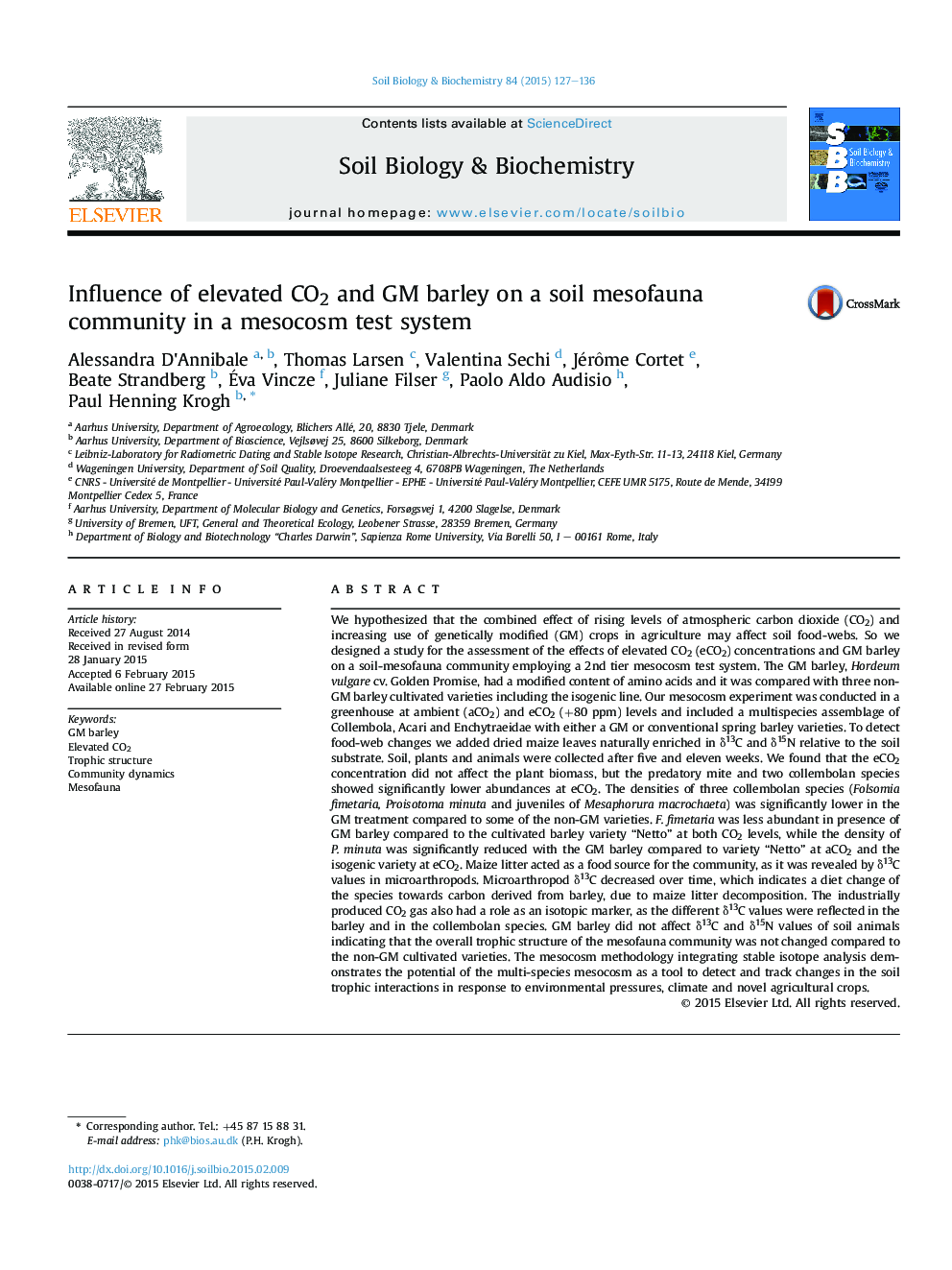| کد مقاله | کد نشریه | سال انتشار | مقاله انگلیسی | نسخه تمام متن |
|---|---|---|---|---|
| 2024551 | 1542600 | 2015 | 10 صفحه PDF | دانلود رایگان |
• Impact study of elevated CO2 and GM barley and their interactions on soil mesofauna.
• We tracked changes in the trophic structure using the stable isotopes 13C and 15N.
• Elevated CO2 and GM barley negatively affected densities of three species.
• Only one collembolan was negatively affected by both elevated CO2 and GM barley.
• The trophic structure was unaffected by a GM barley with modified amino-acid content.
We hypothesized that the combined effect of rising levels of atmospheric carbon dioxide (CO2) and increasing use of genetically modified (GM) crops in agriculture may affect soil food-webs. So we designed a study for the assessment of the effects of elevated CO2 (eCO2) concentrations and GM barley on a soil-mesofauna community employing a 2nd tier mesocosm test system. The GM barley, Hordeum vulgare cv. Golden Promise, had a modified content of amino acids and it was compared with three non-GM barley cultivated varieties including the isogenic line. Our mesocosm experiment was conducted in a greenhouse at ambient (aCO2) and eCO2 (+80 ppm) levels and included a multispecies assemblage of Collembola, Acari and Enchytraeidae with either a GM or conventional spring barley varieties. To detect food-web changes we added dried maize leaves naturally enriched in δ13C and δ15N relative to the soil substrate. Soil, plants and animals were collected after five and eleven weeks. We found that the eCO2 concentration did not affect the plant biomass, but the predatory mite and two collembolan species showed significantly lower abundances at eCO2. The densities of three collembolan species (Folsomia fimetaria, Proisotoma minuta and juveniles of Mesaphorura macrochaeta) was significantly lower in the GM treatment compared to some of the non-GM varieties. F. fimetaria was less abundant in presence of GM barley compared to the cultivated barley variety “Netto” at both CO2 levels, while the density of P. minuta was significantly reduced with the GM barley compared to variety “Netto” at aCO2 and the isogenic variety at eCO2. Maize litter acted as a food source for the community, as it was revealed by δ13C values in microarthropods. Microarthropod δ13C decreased over time, which indicates a diet change of the species towards carbon derived from barley, due to maize litter decomposition. The industrially produced CO2 gas also had a role as an isotopic marker, as the different δ13C values were reflected in the barley and in the collembolan species. GM barley did not affect δ13C and δ15N values of soil animals indicating that the overall trophic structure of the mesofauna community was not changed compared to the non-GM cultivated varieties. The mesocosm methodology integrating stable isotope analysis demonstrates the potential of the multi-species mesocosm as a tool to detect and track changes in the soil trophic interactions in response to environmental pressures, climate and novel agricultural crops.
Journal: Soil Biology and Biochemistry - Volume 84, May 2015, Pages 127–136
